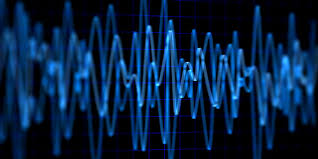Reducing Signal Noise in Practice
Signal noise in an industrial environment has the ability to cause havoc with process control systems. This electrical noise can inject itself onto analog or digital signals and fool control equipment into thinking the process variable is different from what it actually is. This miscommunication between process control equipment, as with all kinds of miscommunication, can lead to any number of unforeseen, unintended consequences. As any electrical engineer will tell you, no system can continue to function properly without proper communication.
No industrial facility is going to ever be 100% free of electrical noise. The low levels of noise present in most plants is typically not enough to cause a problem. It is when the signal-to-noise ratio gets to unmanageable levels that it becomes a problem. Hardware and software solutions are available to help combat signal noise in particularly noisy environments, including noise filter settings that may be available in existing equipment already installed but inadequately utilized. Buying expensive new equipment in order to filter noise or isolate signals should, in most cases, be unnecessary if proper planning and installation practices are adhered to in the first place. Knowing what signal noise is, what causes it, and how to prevent it from interfering with signal networks should provide the right arsenal of tools needed to keep communication flowing.
DEFINING SIGNAL NOISE
Signal noise, in its most basic sense, is any unwanted interference that degrades a communication signal. Signal noise can interfere with both analog and digital signals; however, the amount of noise necessary to affect a digital signal is much higher. This is because digital signals communicate using a set of discrete electrical pulses to convey digital “bits.” Those electrical pulses would require a lot of noise in order to be confused with one another.
Conversely, analog signals represent an infinite range of possible values using an established range, such as 4-20 mA or 0-10 V. In this case, any unwanted voltage or current spikes will cause a fluctuation in the message being communicated. Minuscule variations along analog signals, on the order of millivolts or microamps, typically do not result in a significant (or even perceptible) discrepancy. High levels of electrical noise, however, can produce large variations and therefore lead to substantial discrepancies making communication between process control devices utterly impossible.Signal noise injected onto electrical communication will add or detract from the expected signal value. In an industrial situation where vital processes are automatically controlled based on the measurement of that signal, any variation can lead to unpredictable and potentially damaging results.
COMMON CAUSES OF SIGNAL NOISE
Noise injection can occur anywhere in the system and at any physical location in which the network is exposed. It can be the result of various factors at any location on the network. It may seem a daunting task to troubleshoot signal noise; nonetheless, there are some causes that are more common than others. These common causes account for the vast majority of signal noise interfering with process control networks.
GROUND LOOPS AND IMPROPER GROUNDING
As discussed in the previous issue of The Current Quandary, ground loops inject additional current onto the signal loop via a voltage differential between two grounding locations in a multi-ground system. This and other grounding issues can lead to an influx of signal noise on an otherwise functional network.
POOR WIRING PRACTICES
Poorly wired networks, such as those not utilizing shielded twisted-pair and conduit, are more susceptible to ambient electrical noise.
POORLY DESIGNED PRODUCT CIRCUITRY
Poorly designed electronic circuitry within devices, which does not provide adequate shielding against internal and external sources of noise, will also be more likely to have signal issues.
CLOSE PROXIMITY TO OTHER ELECTRICAL EQUIPMENT
Devices or wires placed in close proximity to electrical equipment that generates strong magnetic fields, such as generators, motors, or power lines, can pick up some of that interference, which can contribute to fluctuations in communications signals
LONG WIRE LEADS PICKING UP RADIO FREQUENCY
Long segments of wire (especially unshielded wire) essentially act as antennae; they pick up radio waves and convert them to electrical signals, contributing to additional noise in the system.
PROBLEMS ASSOCIATED WITH SIGNAL NOISE
PROCESS SIGNAL DISTORTION
The most common and obvious problem caused by signal noise is the distortion of the process signal, causing incorrect interpretation or display of a process condition by the equipment. The addition to and/or subtraction from the process signal translates into an incorrect process variable. To put this into context.
APPARENT SIGNAL LOSS
Though uncommon, extreme signal noise can lead to an apparent loss of signal. Most modern electronic equipment have built in noise filtering. However, in extremely noisy environments, this filter will not be enough, which can lead to the equipment not receiving a signal and no communication taking place at all.
IMPROPER CONTROL OF PROCESS
Each device on the network is functioning exactly as intended; however, the signal noise caused a miscommunication between devices. Consequently the tank remained empty. A system experiencing signal noise fluctuations could inadvertently turn relays and alarms on / off at irregular intervals because the noisy signals are being misunderstood. A situation like this results in the improper control of an industrial process.


0 Comments